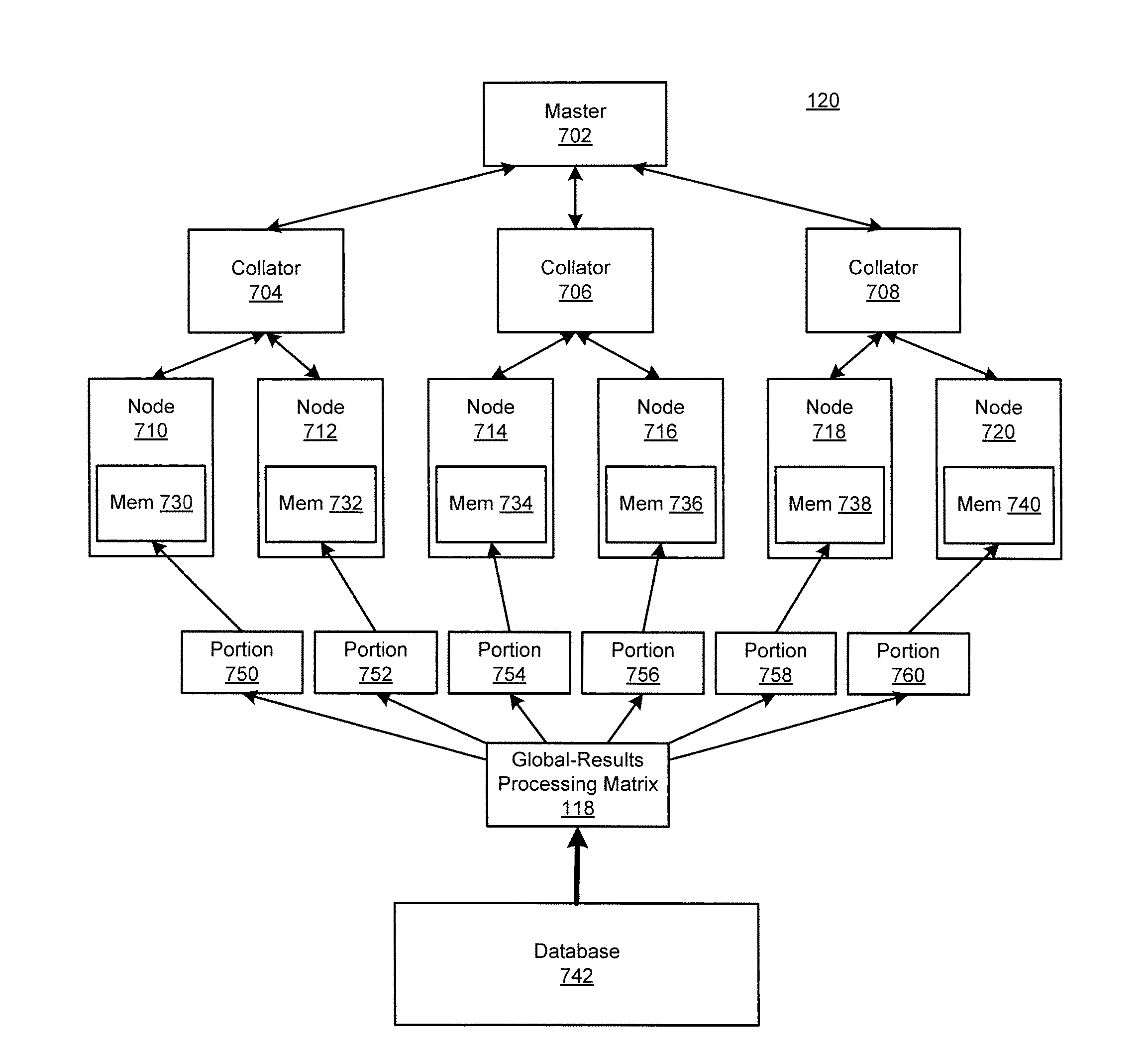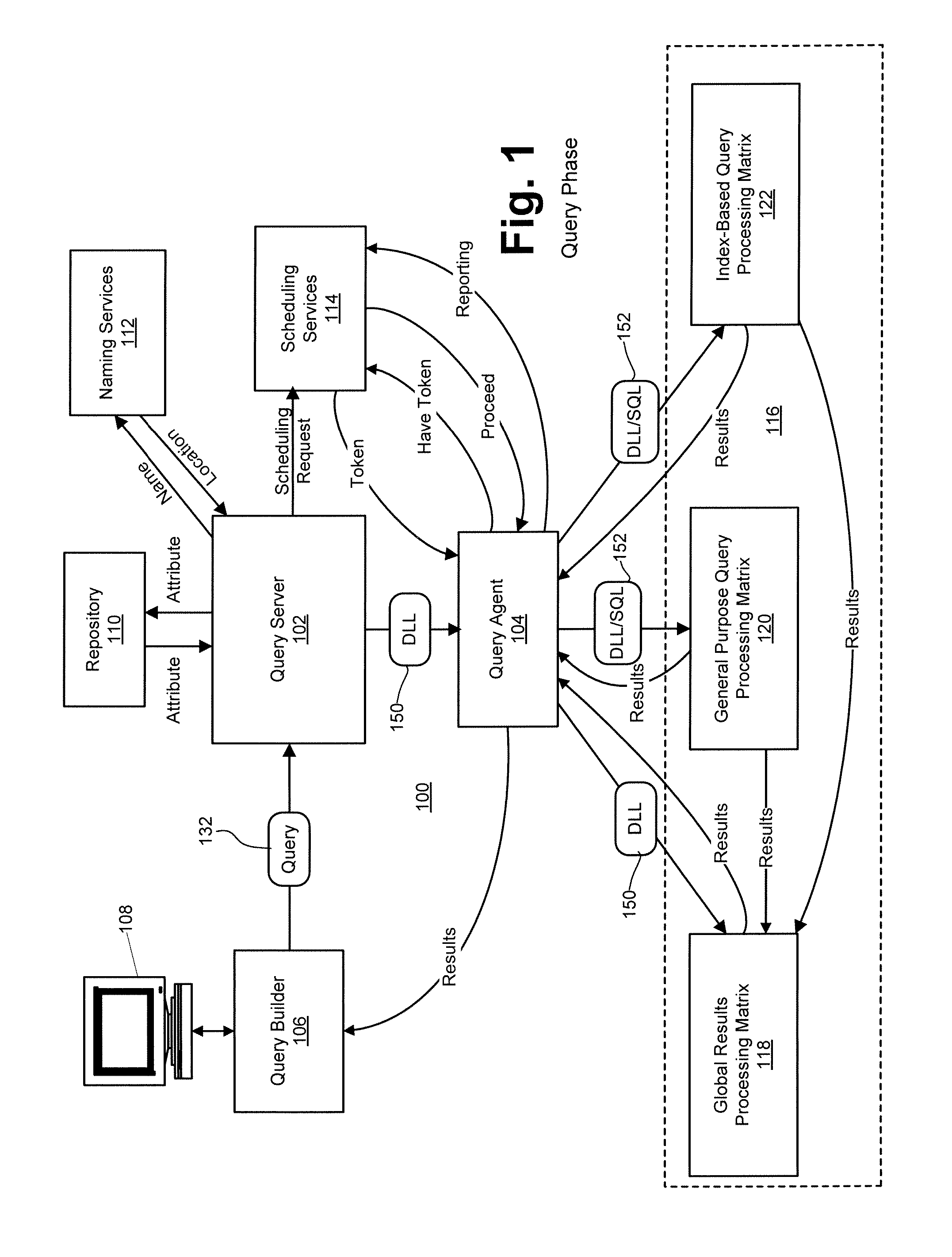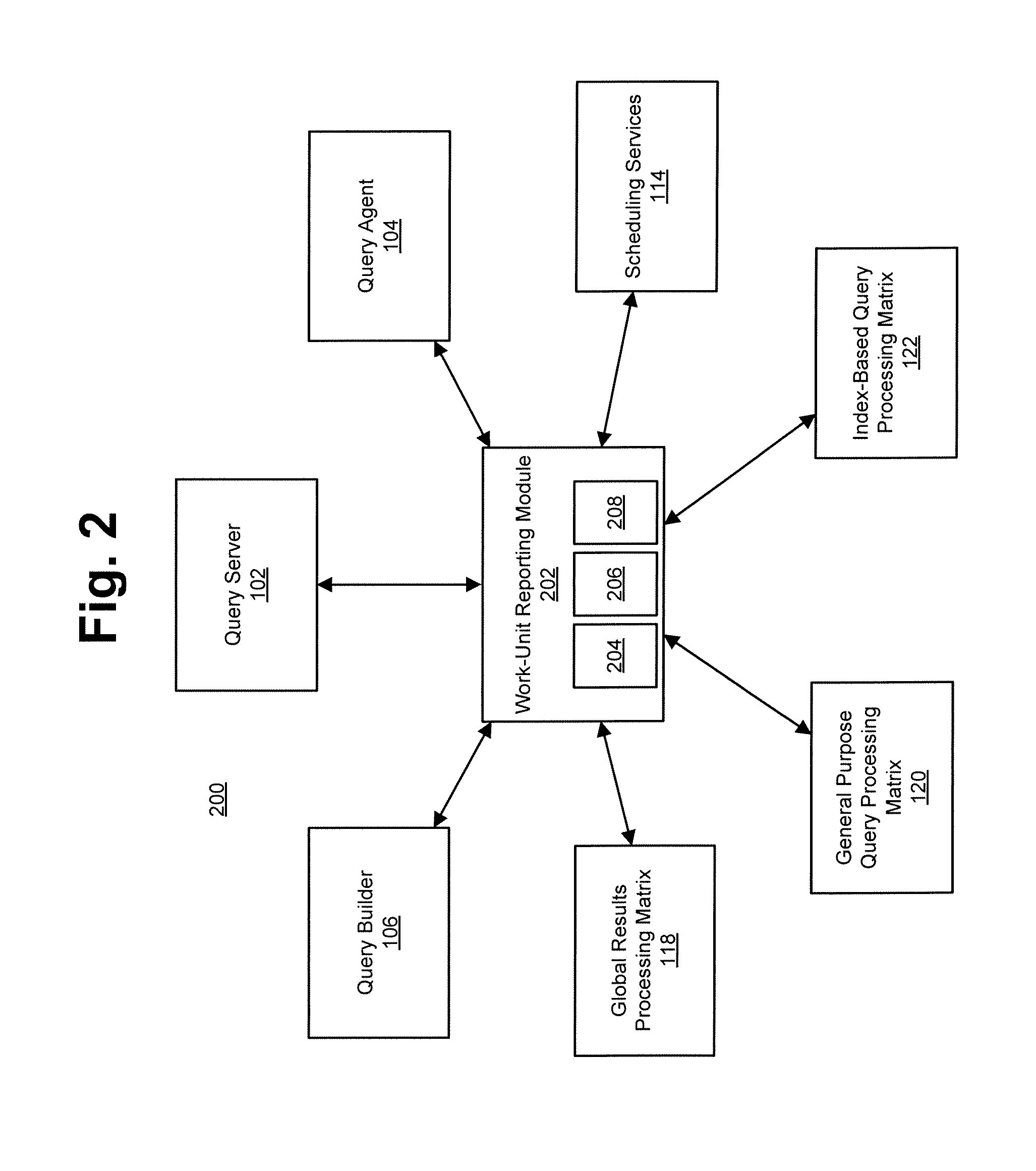System and method for configuring a parallel-processing database system
a database system and database technology, applied in the field of database management, can solve the problems of increasing the amount of data generated by companies, agencies, and other organizations, and taxing the capabilities of current relational database management systems, and inhibiting the client in its use of requested information, etc., to achieve cost savings, reduce the cost of implementation, and reduce the effect of implementation cos
- Summary
- Abstract
- Description
- Claims
- Application Information
AI Technical Summary
Benefits of technology
Problems solved by technology
Method used
Image
Examples
Embodiment Construction
[0036] The following description is intended to convey a thorough understanding of the present invention by providing a number of specific embodiments and details involving parallel processing of database queries. It is understood, however, that the present invention is not limited to these specific embodiments and details, which are exemplary only. It is further understood that one possessing ordinary skill in the art, in light of known systems and methods, would appreciate the use of the invention for its intended purposes and benefits in any number of alternative embodiments, depending upon specific design and other needs.
[0037] A processor is generally understood in the art to include any of a variety of digital circuit devices adapted to manipulate data or other information by performing one or more tasks embodied as one or more sets of instructions executable by the digital circuit device. Processors typically include some form of an arithmetic logical unit (ALU) adapted to p...
PUM
 Login to View More
Login to View More Abstract
Description
Claims
Application Information
 Login to View More
Login to View More - R&D
- Intellectual Property
- Life Sciences
- Materials
- Tech Scout
- Unparalleled Data Quality
- Higher Quality Content
- 60% Fewer Hallucinations
Browse by: Latest US Patents, China's latest patents, Technical Efficacy Thesaurus, Application Domain, Technology Topic, Popular Technical Reports.
© 2025 PatSnap. All rights reserved.Legal|Privacy policy|Modern Slavery Act Transparency Statement|Sitemap|About US| Contact US: help@patsnap.com



